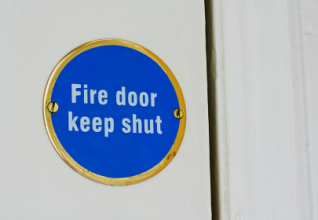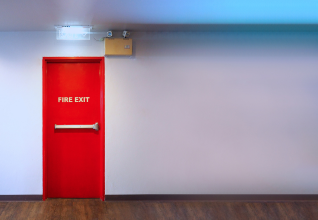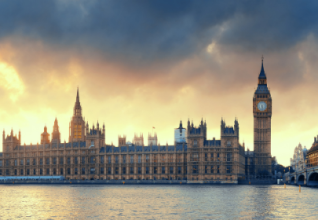7 Key things
Our latest article looks at seven key things that need to be covered in a fire strategy.
1. How will you detect a fire and alert others?
2. What are the provisions for safe escape?
3. How you limit internal fire spread, e.g. via passive fire protection
4. How do you limit external fire spread
5. What are the external and internal provisions to assist firefighters?
6. Any other factors that might need considering?
7. What is the level of fire safety management required for the building?
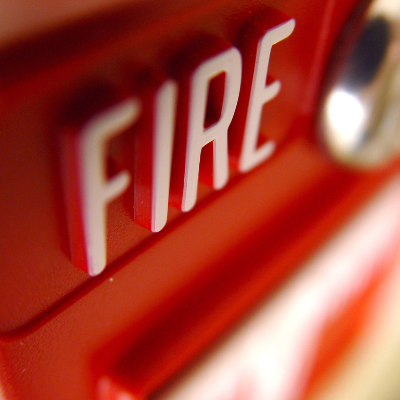
How will you detect a fire and alert others?
No one wants to be sat in an unsafe building and not be alerted to the danger. Systems used to raise the alarm in the event of an emergency must be efficient, effective, approved and designed for your premises.
There are all kinds of automatic fire detection systems equipment designed to detect a fire and alert occupants. Fire detection systems can then activate a set of procedures such as the activation of audible and visual alarms, the release of fire doors, stopping lifts, activation of any fail-safe systems, activation of smoke control systems, and shutting down ventilation systems.
A fire strategy will set out the specification for your building’s automatic fire detection and warning systems. Including where automatic fire detection should be located, what other life safety and building systems should be interfaced with the fire alarm systems, as well as the cause and effect for the system.
What are the provisions for safe escape?
One of the best ways to think about this is the health and safety chat you are given on an aeroplane.
You are advised where the nearest safe exit is, what happens with the lighting system, which will light your way to safety, where the signs are, and a plan of your possible evacuation routes. For example, when you are at work or visiting clients, do you know which escape routes you can use that will lead you to a place of safety?
A fire strategy should set out internal means of escape routes, travel distances, how these escape routes are protected, as well as any life safety systems in the building that will aid occupants to escape the building safely.
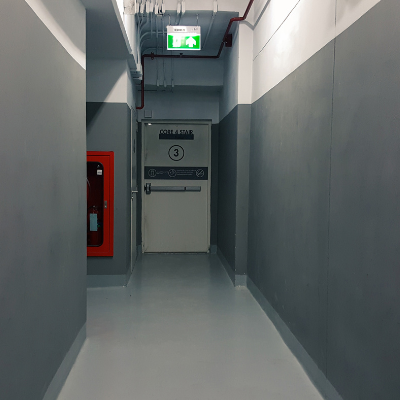
How do you limit internal fire spread, e.g. via passive fire protection?
There are fire safety standards required by the relevant building regulations, depending on where your building is located within the UK. Internal fire compartmentation within a building is designed to prevent the spread of smoke and fire around the building, protect escape routes allow occupants more time to escape, and enclose areas of special fire risk. A fire strategy will set out where fire compartmentation should be located in a building and to what level of fire resistance should be provided.
How do you limit external fire spread?
One of the most terrifying sights is witnessing a fire spread along the external façade of a building as well as from the building it originated into other premises nearby, causing even more damage.
Fire can spread across external wall systems and roofs through the use of incorrect materials used or from materials and safety systems poorly fitted. Requirements for the spread of fire on the external facades of buildings vary depending on the height of a building, the use of a building, or the separation between buildings. Therefore, a fire strategy should set out the requirements for external fire spread.
What are the external and internal provisions to assist firefighters?
Access arrangements and firefighting facilities for firefighters play a large role in the impact a fire has on the life safety of occupants in your building, as well as the amount of damage a fire will do to your building.
A fire strategy should set out how easily firefighters can gain access to your premises, where the nearest fire hydrants or water supplies are located, where firefighting lifts are located, where dry or wet rising mains are located, and where building plans are located, as well as any other arrangements for firefighters.
Are there any other factors that might need considering?
Outside of what we have covered and with the best will in the world, some older buildings or specialist buildings may present additional risks. A fire strategy should set out where a building deviates from benchmark fire safety standards and how these are compensated for or accepted as suitably low risk. It should set out how these deviations should be managed.
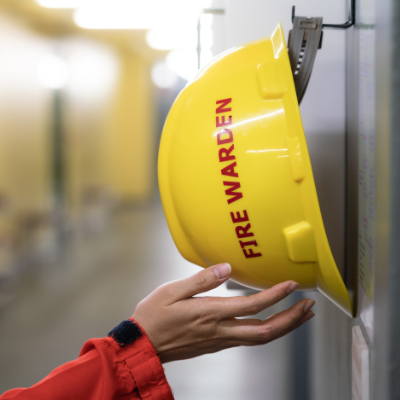
What is the level of fire safety management required for the building?
- Communication – ensuring that all members of staff and visitors know what to do in the event of a fire
- Culture – ensuring that health and safety and, in particular, fire safety form a part of the organisation’s culture
- Records – make sure your records are up to date, correct, and suitably stored
- Fire Risk Assessment – not just a box-ticking, lowest-cost solution, but a thorough specific recording of significant findings to ensure compliance and beyond
- Practice evacuations – making sure that these are not just paid lip service to and everyone knows the value of these
- Maintaining of life safety equipment – Ensuring equipment is tested and maintained to the highest standards
- Arranging planned preventative maintenance schedules for the fire protection systems and any other relevant services
- Staying up to date with current laws and regulations and ensuring they are implemented
- Training – training staff so that they know what to do and how best to do it
- Management of external contractors – ensuring that they know what their obligations are
In conclusion
It can be difficult and time-consuming to make sure that your organisation is beyond safe and takes the extra steps and effort to make sure that you are really safe. That’s where Ligtas can support you.
Ligtas’ team of fire safety specialists can undertake retrospective fire strategies for your buildings to ensure your fire safety management is suitable, sufficient, and effective.
We have gained peace of mind by having a provider who listens and responds to not only the big things but to all of our needs. Ligtas continue to provide a professional service by delivering best practices ensuring that we remain compliant and our customers safe.
Phil Sleet - Specsavers - Head of Health & Safety UK/ROI Retail

